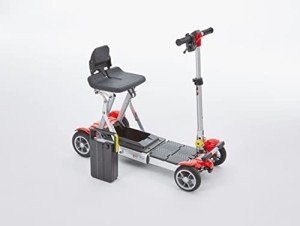Why Mobility Aids Is Fast Increasing To Be The Most Popular Trend In 2024

Understanding Mobility Aids: Enhancing Independence and Quality of Life
As society continues to age and individuals significantly seek methods to keep self-reliance, the need for mobility aids has actually never been more important. Mobility aids, which incorporate a range of devices created to assist people with walking or moving, play a crucial role in promoting mobility, boosting security, and improving general quality of life. This article will explore the numerous kinds of mobility aids, their benefits, considerations for selection, and address some often asked questions.
Kinds Of Mobility Aids
Numerous mobility aids are readily available, each developed to resolve particular requirements. The following table summarizes some of the most common types of mobility aids and their functions.
| Type of Mobility Aid | Description | Best Suited For | Key Features |
|---|---|---|---|
| Walking canes | A handheld stick offering support and balance. | People who require minimal help. | Light-weight, portable, adjustable height. |
| Walkers | Four-legged frames providing stability. | Those needing substantial assistance while strolling. | Foldable, some with wheels, added security functions. |
| Rollators | Wheeled walkers with a seat for resting. | People requiring mobility with the choice to rest. | Brakes, baskets for personal products, adjustable height. |
| Wheelchairs | Chairs with wheels for people with minimal mobility. | Those unable to stroll or requiring extensive assistance. | Manual or powered options, personalized seating. |
| Scooters | Motorized devices for larger distances. | People with minimal endurance but needing independence. | Various sizes and styles, frequently portable. |
| Crutches | Assistance devices put under the arms or forearms. | Individuals recovering from lower limb injuries. | Adjustable, lightweight, needs upper body strength. |
| Stairlifts | Mechanical devices for moving in between floorings. | Users dealing with obstacles in multi-level homes. | Personalized for different staircases, automated. |
Benefits of Mobility Aids
Mobility aids supply a range of advantages that can substantially enhance the lives of individuals facing mobility challenges. Some notable benefits include:
- Increased Independence: Mobility aids empower people to move freely without counting on others for support, consequently improving their self-confidence and self-esteem.
- Improved Safety: Using mobility aids can decrease the risk of falls and injuries, particularly for older adults or those with balance problems.
- Enhanced Quality of Life: By facilitating mobility, individuals can participate in social activities, go to occasions, and take pleasure in life more fully, contributing to better emotional and mental health.
- Rehab Support: After surgical treatment or injury, mobility aids provide required assistance and stability, helping in recovery and rehabilitation processes.
- Accessibility: Many mobility aids are developed to be utilized both indoors and outdoors, making sure that individuals can navigate different environments with ease.
Elements to Consider When Choosing Mobility Aids
Picking the suitable mobility aid requires mindful factor to consider of numerous factors, including:
| Factor | Factors to consider |
|---|---|
| User's Needs | Assess the level of mobility needed; think about whether the user needs short-term or long-term help. |
| Physical Limitations | Evaluate the user's strength, balance, and coordination to determine the very best type of aid. |
| Setting | Think about the main environments where the aid will be utilized, such as home, outdoors, or specific terrains. |
| Weight and Portability | Ensure that the picked device is workable regarding transportability and storage, especially for outside usage. |
| Budget plan | Mobility aids been available in a series of rates; think about insurance protection and available funding alternatives. |
| Adjustability | Choose aids that can be changed for height and convenience to accommodate growth or altering needs. |
Frequently Asked Questions About Mobility Aids
1. How do I understand if I require a mobility help?
Many factors can signify the need for a mobility aid, such as difficulty walking or stabilizing, fatigue while standing, or a current surgical treatment impacting mobility. Consulting with ultra lightweight electric scooters can provide assistance tailored to individual needs.
2. What kinds of mobility aids are covered by insurance?
Coverage differs in between insurers, but a lot of provide options for resilient medical equipment, which typically includes wheelchairs, walkers, and some kinds of canes. Check with your insurance coverage provider for specific protection details.
3. Can mobility aids be used outdoors?
Yes, numerous modern-day mobility aids are designed for outdoor usage. Rollators, scooters, and some walkers are geared up with functions for stability and ease of use on numerous surface.
4. How do I keep my mobility aid?
Routine upkeep involves looking for any wear and tear, making sure that parts such as wheels, brakes, and frames are functioning correctly, and cleaning up the equipment as needed. Following the producer's guidelines is vital for safety.
5. Is there a risk of becoming depending on mobility aids?
While some users might end up being reliant on mobility aids, they are created to promote independence and mobility. Slowly utilizing a mobility help can enhance self-confidence and aid keep physical strength and coordination.
Mobility aids are important tools that empower people to overcome physical challenges, promoting independence and enhancing quality of life. By comprehending the different kinds of mobility aids readily available, their advantages, and important elements for consideration, families and caregivers can make informed decisions that best fulfill the requirements of their loved ones. With the best assistance, those with mobility obstacles can lead fulfilling and active lives, complimentary to check out the world around them.

